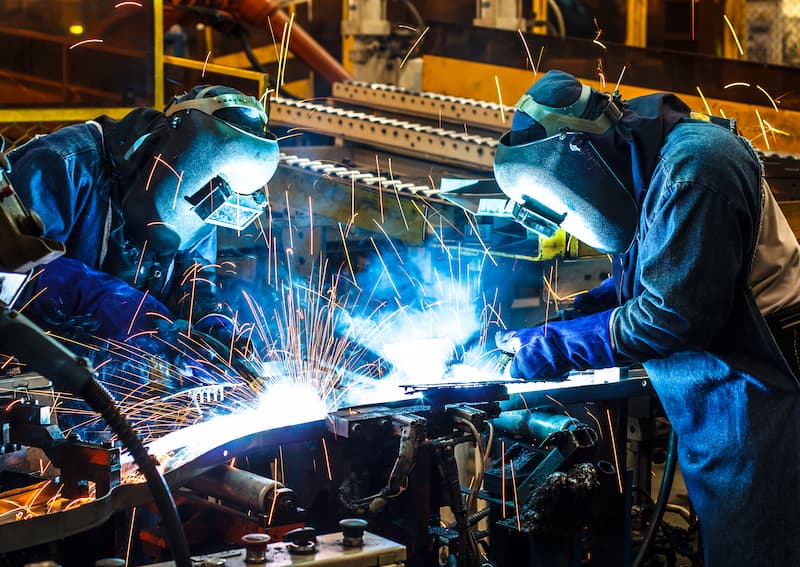Welding WPS for Beginners: Getting Going with Welding Treatment Specifications
Welding WPS for Beginners: Getting Going with Welding Treatment Specifications
Blog Article
The Ultimate Guide to Welding WPS Procedures: A Detailed Summary for Welders
In the detailed world of welding, Welding Procedure Specifications (WPS) offer as the foundation of guaranteeing top quality, uniformity, and safety in welding operations (welding WPS). As we delve right into the various components of a WPS and explore the complexities of certification and certification, we will certainly reveal the important role these treatments play in the world of welding.
Significance of WPS Procedures
Recognizing the relevance of Welding Procedure Requirements (WPS) treatments is essential for making sure the high quality and integrity of bonded frameworks. WPS procedures work as a roadmap for welders, laying out the needed actions, specifications, and materials required to attain an audio weld. By adhering to WPS guidelines, welders can guarantee uniformity in their job, bring about structurally audio and reliable welds.
One of the primary reasons that WPS treatments are vital is their function in maintaining weld top quality and stability. Complying with the specified welding specifications and strategies detailed in the WPS helps prevent issues such as porosity, splitting, or incomplete fusion, which can jeopardize the stamina and toughness of the weld. Additionally, WPS treatments are critical for making certain conformity with industry standards and codes. By complying with established WPS standards, welders can demonstrate that their work meets the essential demands for security and quality, providing guarantee to customers, assessors, and regulative bodies. Basically, the significance of WPS procedures can not be overemphasized, as they are essential to achieving consistent, high-quality welds that fulfill industry requirements and specifications.

Elements of a WPS
A Welding Procedure Spec (WPS) usually consists of vital components that information the details needs for implementing a weld, making certain consistency and high quality in the welding procedure. The essential parts of a WPS consist of essential variables such as base metals, filler metals, interpass and preheat temperatures, welding procedures, shielding gases, welding positions, and post-weld heat treatment demands.
Base metals refer to the materials being joined, while filler steels are made use of to load the space between the base metals during welding. Preheat and interpass temperatures are vital for managing the warm input and protecting against issues like fracturing or distortion. The welding procedure lays out the details strategy to be utilized, whether it's gas steel arc welding (GMAW), secured metal arc welding (SMAW), or another approach. Shielding gases safeguard the weld swimming pool from climatic contamination. Welding positions define the alignments in which welding can be done. Post-weld warm treatment might be required to alleviate stress and anxieties and boost the weld's homes. A comprehensive understanding of these elements is crucial for producing a reliable and extensive WPS.

Credentials and Accreditation
Having developed the important parts of a Welding Treatment Specification (WPS), the emphasis currently changes in the direction of the crucial aspects of credentials and accreditation in welding methods.

Certification, on the other hand, is the official recognition of a welder's credentials by a pertinent qualification body or organization. Welding certifications are typically based on the certain welding processes, products, and positions a welder is certified to deal with. Holding a legitimate welding accreditation shows that a welder meets sector standards and is experienced to execute welding tasks to the a fantastic read needed specs.
Developing a WPS
To develop a Welding Procedure Requirements (WPS) that meets market criteria, cautious factor to consider of welding procedures, materials, and functional specifications is essential (welding WPS). The very first step in creating a WPS is to identify the welding process to be utilized, such as gas steel arc welding (GMAW) or protected metal arc welding (SMAW) When the welding process is identified, the next essential aspect is picking the appropriate products, considering factors like base steel kind, thickness, and joint design. Operational parameters such as welding present, voltage, traveling rate, and shielding gas structure need to also be meticulously specified in the WPS.

Applying and Keeping An Eye On WPS
Upon finalizing the comprehensive Welding Treatment Requirements (WPS) that thoroughly details welding processes, materials, functional criteria, and high quality guarantee actions, the emphasis moves to efficiently implementing and keeping an eye on the well established treatments. Implementation includes ensuring that all welders entailed in the job are familiar with the WPS and follow it meticulously throughout the welding process. Reliable execution and monitoring of the WPS are essential for making sure the integrity, stamina, and safety and security of the bonded joints, ultimately contributing to the general success of the welding task.
Conclusion
In conclusion, understanding and complying with Welding Procedure Requirements (WPS) is essential for welders to guarantee quality, uniformity, and safety in their job. By recognizing the elements of a WPS, obtaining proper qualifications and qualifications, creating comprehensive treatments, and executing and checking them properly, welders can enhance their abilities and proficiency in welding methods. Sticking to WPS treatments is important for producing top quality welds and conference market criteria.
In the intricate world of welding, Welding Procedure Specs (WPS) offer as the foundation of making sure quality, uniformity, and safety and security in welding procedures. The welding process describes the details technique to be utilized, whether it's gas metal arc welding (GMAW), protected metal arc welding (SMAW), or another method.To develop a Welding Treatment Spec (WPS) that satisfies market requirements, cautious factor to consider of welding processes, materials, and operational parameters is essential. The first action in developing a WPS is to recognize the welding process to be made use of, such as gas metal arc welding (GMAW) or protected steel arc welding (SMAW)Upon settling the detailed Welding Procedure Requirements (WPS) that meticulously details welding processes, materials, operational specifications, and quality guarantee procedures, the emphasis changes to efficiently executing and keeping track of the well established procedures.
Report this page